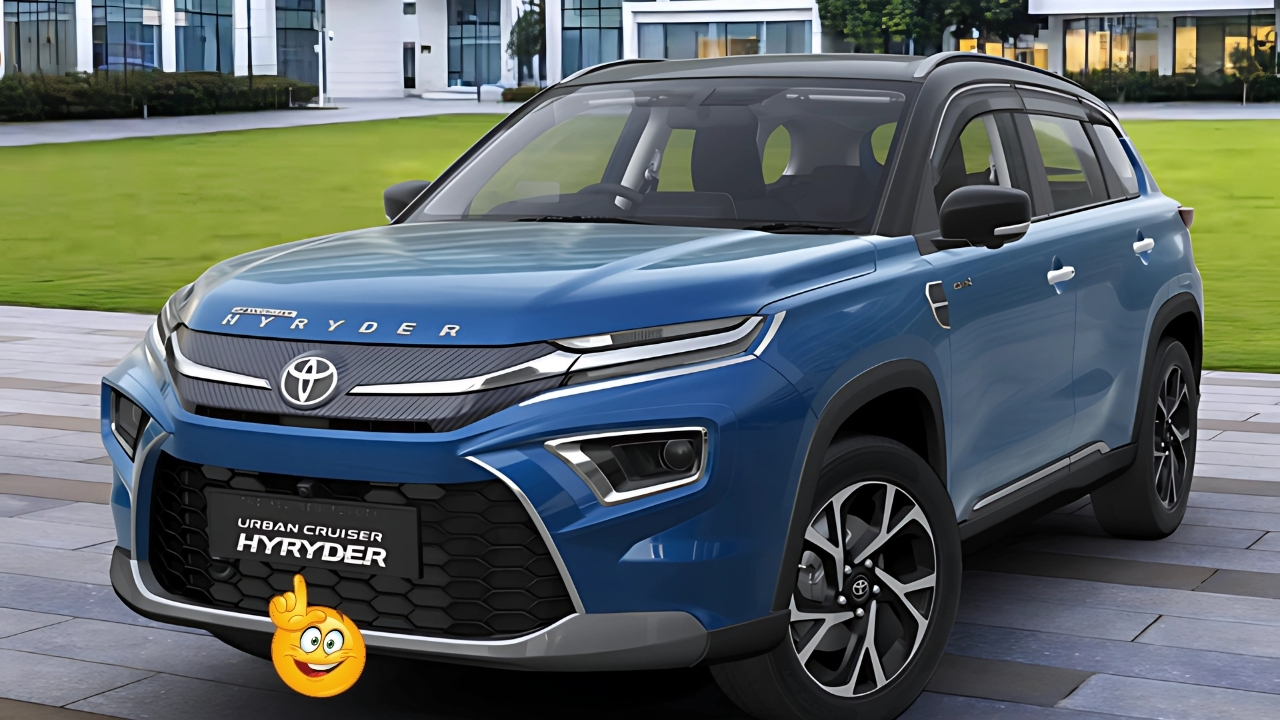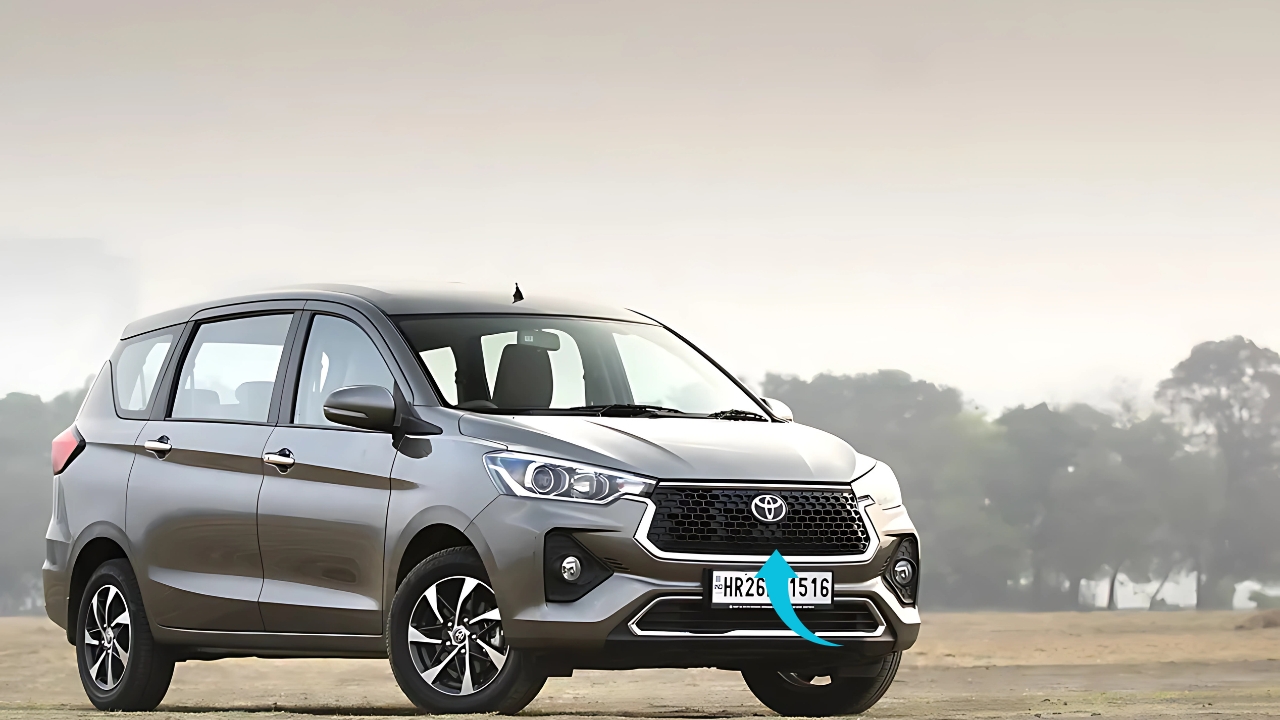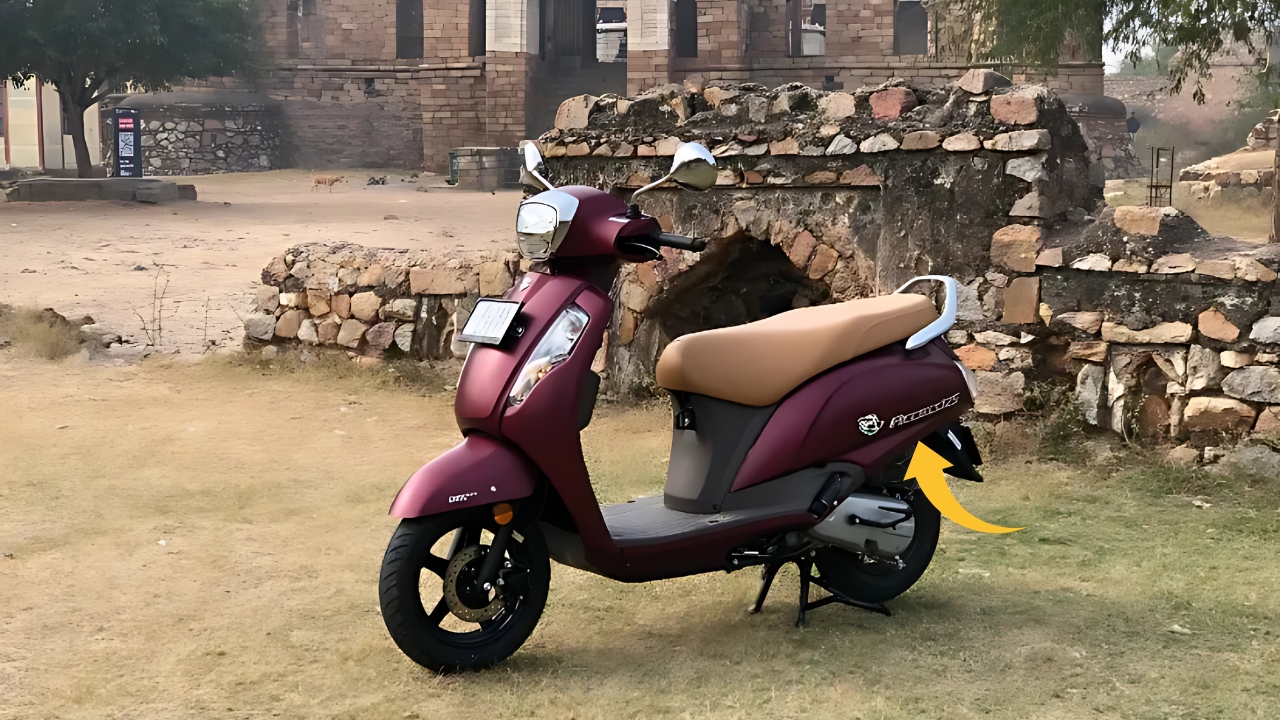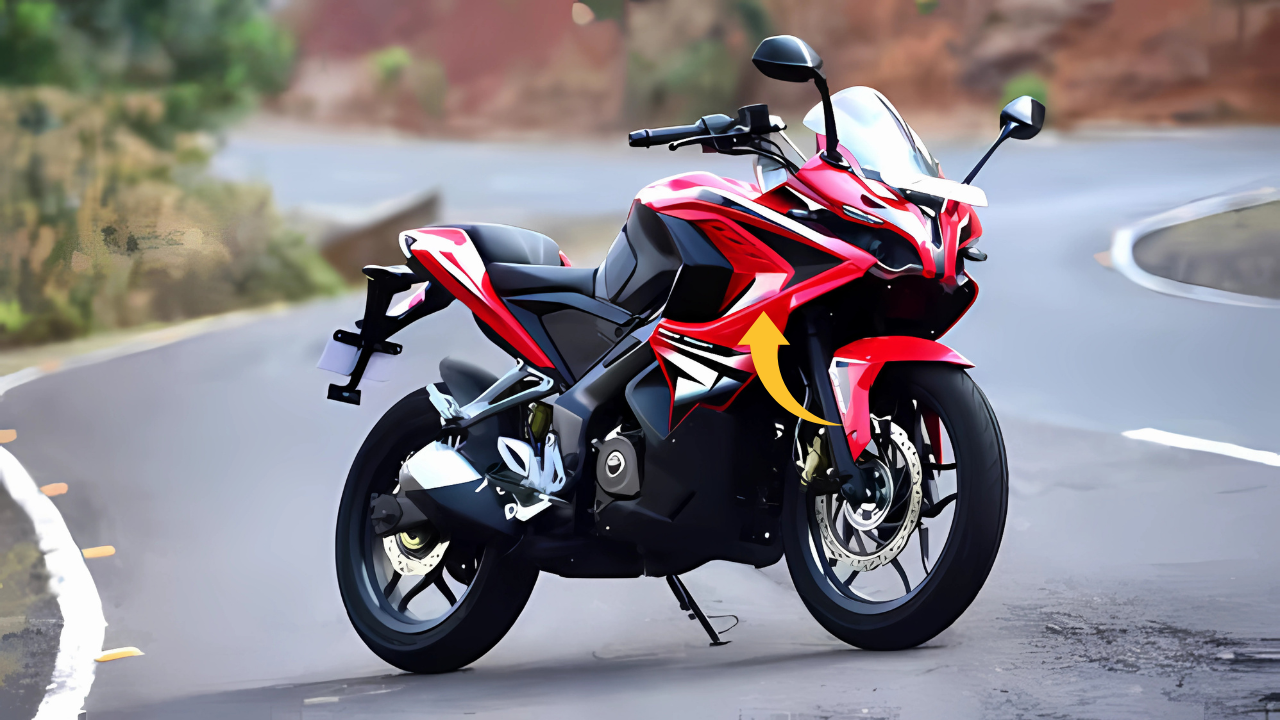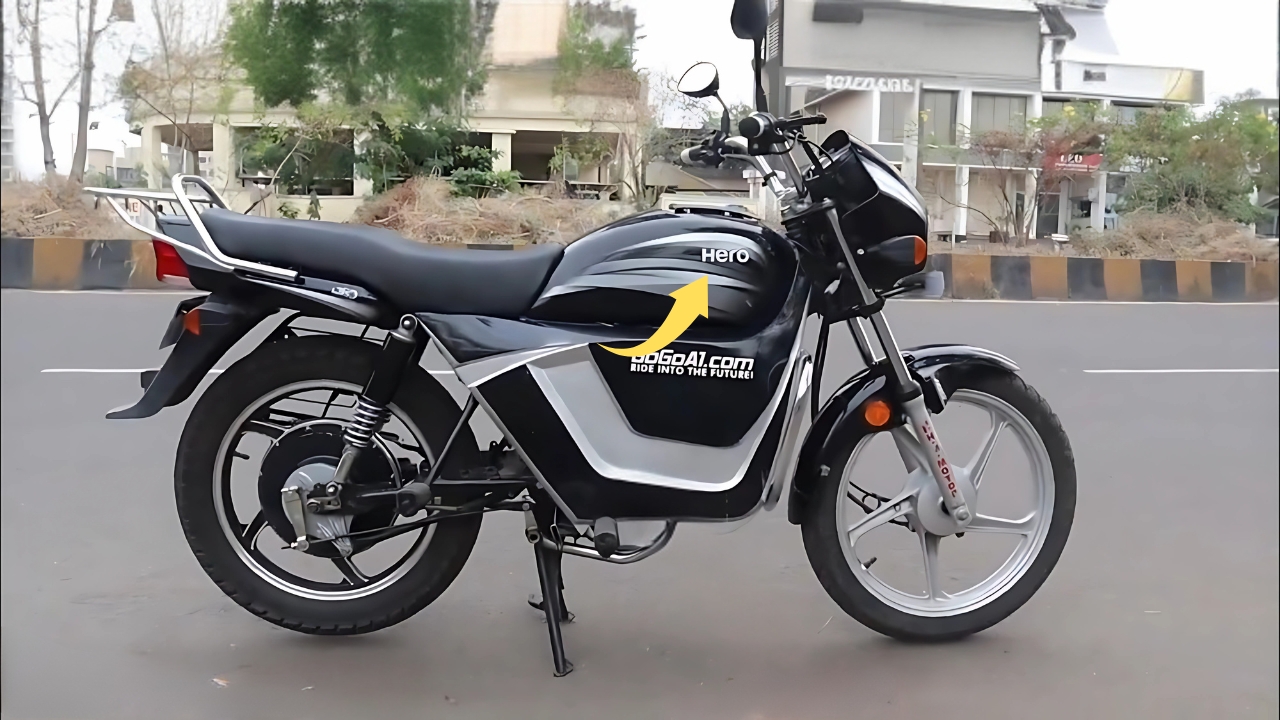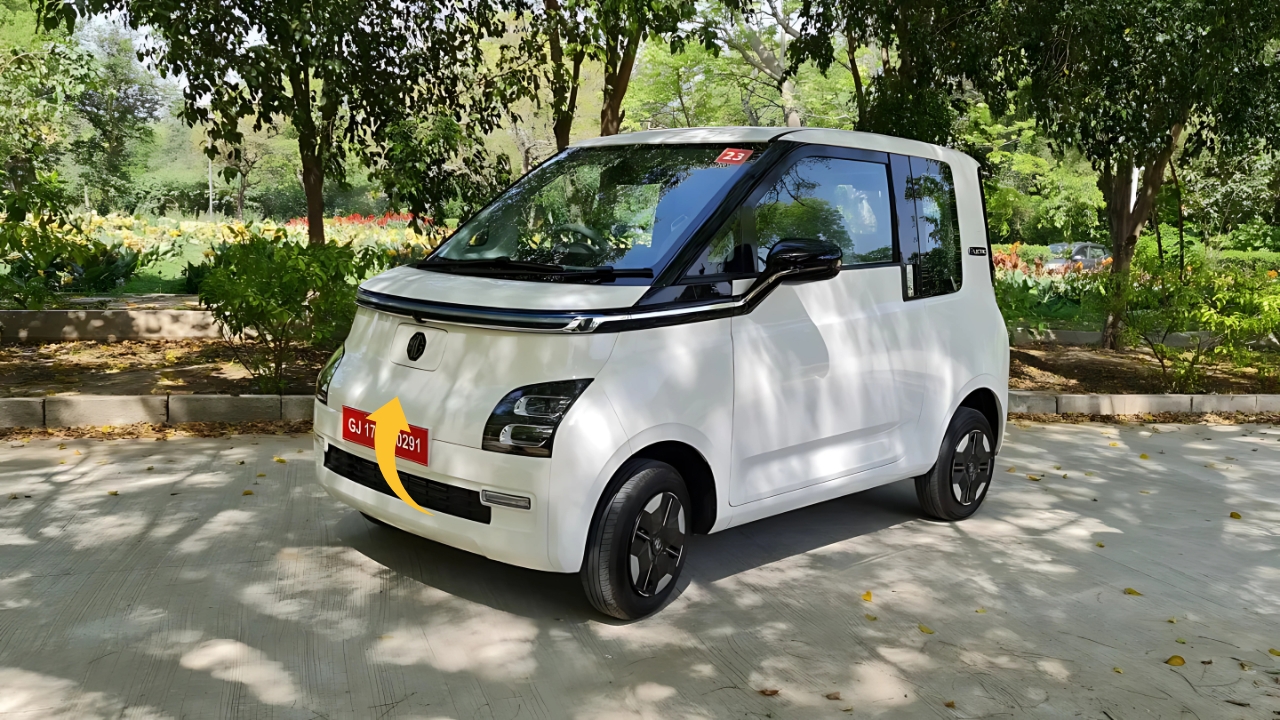Toyota Hyryder: Toyota Urban Cruiser Hyryder marks an era in Indian automotive industry. This midsize SUV, which was unveiled in 2022, heralded Toyota’s aggressive move in one of India’s most fiercely contested category, also bringing in the hybrid technology at a price range that seemed out of reach previously.
The first strong hybrid SUV in its class, the Hyryder is a product of Toyota’s commitment to global sustainability, specially tailor-made for the Indian market and the Indian consumer patterns.
Table of Contents
Toyota Hyryder: Strategic Partnership and Production
Inspired by Toyota’s collaboration with Suzuki on a global scale, the Hyryder is the realisation of a new way in which the Japanese automotive manufacturers can benefit from working together.
Unlike previous attempts at badge-engineering (a la Glanza or Urban Cruiser), the Hyryder was conceived together from start.
The model uses the same platform as the Maruti Suzuki Grand Vitara, but with obvious Toyota influences throughout, both in terms of design and powertrain technology.
The car is produced at Toyota Kirloskar Motor’s Bidadi facility near Bangalore and there will be heavy localization at the plant to ensure competitive costs.
This production methodology reflects Toyota’s “Make in India” resolve and also its optimization of mass production system by using Toyota New Global Architecture (TNGA) based EGAs.
Design Philosophy and Outside
The Hyryder gets global SUV design cues while keeping the Indian taste in mind. At 4,365mm long, 1,795mm wide and 1,645mm tall, the dimensions of the carclearly fall into the bracket of a midsize SUV, directly surpassing the likes of the Hyundai Creta /Kia Seltos.
First off, the front end is defined by the exclusive grille with carbon patterning, split LED headlamps and clamshell bonnet design that gives it road pressence.
Chrome garnishes (something Indian buyers seem to have taken a liking for) have been used tastefully and are not seen across the exterior.
The modern looks, which are modern to the eye and attractive, still look handsome, and the dual-tone roof and 17-inch alloy wheels add to its modern but substantial style.
Powertrain Innovation
The Hyryder has a very important role to play in the Indian market and it is the powertrain options especially the solid hybrid setup. There are two different powertrains available:
Neo Drive (excerpt from Suzuki): 1.5L K-series engine with mild hybrid system, the engine puts out 103 PS and 137 Nm of torque, mated to a 5-speed manual and a 6-speed automatic transmission.
This version also comes with a choice of AllGrip all-wheel drive options – a rarity in the segment.
The Hybrid (Toyota’s area of special expertise): A 1.5-liter TNGA engine with its electric motor counterpart puts out a total 115 PS, with e-Drive transmission (Toyota’s version of an electronic-CVT system) as the only conceivable transmission.
The robust nature of this hybrid system allows for pure electric driving at low speeds, automatically switching between hybrid and electric modes according to conditions.
On performance, the strong hybrid (SH) version offers a claimed efficiency of 27.97 km/l (unheard of in a segment known for its huge appetite), which is in the same range as small hatchbacks.
But that efficiency doesn’t compromise performance, and the electric motor’s instant torque delivers peppy around-town acceleration.
Interior and Technology
On the inside, the Hyryder provides a premium cabin with a brow and black interior color theme, soft-touch coverings on all commonly contacted surfaces, and acoustic glass for added NVH (Noise, Vibration, Harshness) performance.
The full-length, panoramic sunroof fills the cabin with light, and it’s become a borderline mandatory feature in the segment.
Technology-wise, you get a 9-inch touchscreen infotainment system with wireless Apple CarPlay and Android Auto, a digital instrument cluster with hybrid-specific graphs, wireless charging, and connected car tech that lets you control aspects like remote climate and vehicle health.
There’s no significant technology on offer beyond safety features like six airbags, vehicle stability control, hill-hold assist, and a 360-degree camera.
The powerful hybrid model even includes an Acoustic Vehicle Alerting System (AVAS) that emits a sound at low speeds, in order to make pedestrians aware of the car’s silent electric drive.
Market Impact and Positioning
The Hyryder walked into a market already cutthroat with the likes of entrenched Korean and Indian players. It was introduced by Toyota as a higher-level counterpart to provide a higher level of creature comforts and more advanced powertrain technology as well as the peace of mind of Toyota’s long-standing reputation for dependability.
Pricing released was a pleasant surprise for onlookers, as introductory price not only was ₹10- 15k lower on intro Neo Drive (which starts at around ₹10.5 lakh) but the top Hybrid variant were at stickered at ₹18.9 lakh (ex-showroom)!!
Such pricing would appear to have been formulated to ensure hybrids are viewed as a mass-market technology for the long-term by Toyota rather than as a niche, premium offering.
Sales performance has been encouraging, with Hyryder consistently among the top-ranked five in its category, an impressive milestone for a category entrant that joined the market relatively late.
Environmental Significance
Apart from the business aspect, the Hyryder is Toyota’s logical step towards cutting down automobile emissions in serving markets such as India.
“While the pure electric vehicle is constrained in some countries due to limited charging infrastructure, the strong hybrid can have a positive real-world maintenance effect today without waiting for widespread charging facilities.
Hyryder’s powerful hybrid system economy results in a reduction of carbon emissions of about 30% compared to a conventional petrol engine of equal displacement. At scale, that’s a significant environmental impact as the wider EV ecosystem matures.
Toyota Hyryder:
Beyond the Toyota Urban Cruiser Hyryder represents an evolution of the Indian automobile market, where high end powertrain technology is now reaching mainstream segments.
It is the perfect show case on how multi-nationals can effectively transplant sustainability program in a foreign market by localized thinking and strategic alliances.
As India burrows its automotive future between traditional internal combustion and complete electric propulsion, these Hyryders test the waters for strong hybrids as a realistic intermediary.
For customers, it presents the chance to take to the road more sustainably, yet without the need to make concessions for convenience, performance or value – potentially resetting the benchmark in one of India’s most significant automotive markets.
